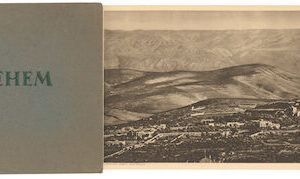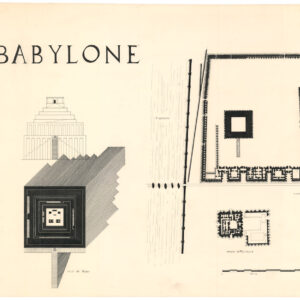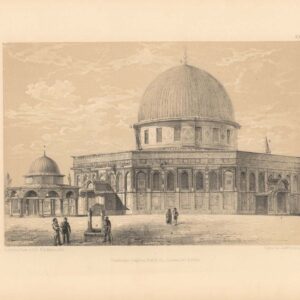The Survey of Western Palestine’s grandiose 26-sheet map in original covers.
Map of Western Palestine in 26 Sheets, from Surveys Conducted for the The Committee of the Palestine Exploration Fund.
Out of stock
Description
The Victorian Era saw the emergence of an early modern mindset. Part of this new way of thinking entailed a passionate re-envisioning of the distant past. It was hoped that in the rediscovery of civilizational roots, Christendom might begin to align the aging tenets of faith with the bold new advances of science.
No place on Earth was more the target of such romantic desires than the Biblical land of Palestine. Ruled for centuries by the Ottomans, the Victorian craze for travel had made the Holy Land more accessible to Europeans than it had even been before, and it was within this elated context of exploration and adventure that our seminal map was created.
For almost a decade, from 1872 to 1881, the Palestine Exploration Fund (PEF) conducted their famously comprehensive Survey of Palestine. The Royal Engineers carried out the majority of the work, and the task was divided into distinct parts from the outset. The Western Palestine survey (1872-1877) was led by Captain Richard Warren Stewart, Lieutenant Claude Conder, and Lieutenant Herbert Kitchener and covered a total area of 6,040 square miles, whereas the smaller Eastern Palestine survey (1880) was led by Conder alone and covered 510 square miles of sparsely populated land in what today is Jordan (incl. Amman and Madaba). In unison, the extensive fieldwork constituted the first fully scientific mapping of the region.
The PEF survey went far beyond the scope of geography. Among their many efforts, the team collected thousands of place names with the aim of identifying locations associated with Biblical, Talmudic, early Christian, or Crusader history.
The principal cartographic outcome was this enormous 26-sheet map, executed at a scale of 1:63,360 (also known as the ‘one-inch map’). This was the most detailed and accurate map ever produced of the region and still represents a pinnacle of Victorian mapping.
The scope of the map stretches from the mouth of the Qasmiyeh River in modern Lebanon to Deir al-Balah in what today constitutes the Gaza Strip. Being the Survey of Western Palestine, the map extends inland to include the Jordan River Valley but little to nothing beyond. The year after this map was published, Captain Conder carried out the ‘Survey of Eastern Palestine,’ which covered 510 square miles that included the then provincial towns of Amman and Madaba.
The map was produced as a photo-zincography by the Ordnance Survey Office in Southampton in 1879. Each of the 26 sheets has been provided with graticules of latitude and longitude, as well as an information key that includes scales, an explanatory legend, and the names of those involved in its making. Individual sheet numbers allow for easy arrangement of the sheets to form a whole.
Cartographer(s):
Horatio Herbert Kitchener, 1st Earl Kitchener, was an Irish-born British Field Marshal and proconsul who gained fame for his imperial campaigns and later played a central role in the early part of the First World War, although he died halfway through it. In 1874, at age 24, the Palestine Exploration Fund tasked Kitchener to carry out a topographical survey of the Holy Land, replacing Charles Tyrwhitt-Drake, who had died of malaria.
Together with fellow Royal Engineer Claude R. Conder, Kitchener surveyed the region between 1874 and 1877, collecting data on the topography and toponymy of the area, as well as on local flora and fauna.
Edward StanfordEdward Stanford (1827-1904) was a prominent British cartographer and entrepreneur who founded Stanford’s, a map-selling business that became one of the most significant map publishing companies in the 19th and 20th centuries. Established in 1853, his London-based shop was renowned for its extensive range of topographic and thematic maps.
Stanford’s attention to detail and dedication to producing accurate, up-to-date maps made his firm the official map supplier to the British government during several notable expeditions. In addition to supplying explorers, the general public, and various institutions with reliable maps, Stanford’s legacy also includes the notable “Stanford’s Library Map of London and its Suburbs,” which was acclaimed for its precision. The brand he founded remains respected in the cartographic world and has also expanded into travel books and accessories.
Condition Description
Overall very good. Some sheets with minor flaws.
Boards cleaned and furbished. New leatherette spine and corners installed. Replaced interior book cloth guards to keep maps in place and secured with Velcro tab.
References



![Jerusalem [Old City].](https://neatlinemaps.com/wp-content/uploads/2024/05/NL-01944_thumbnail-300x300.jpg)